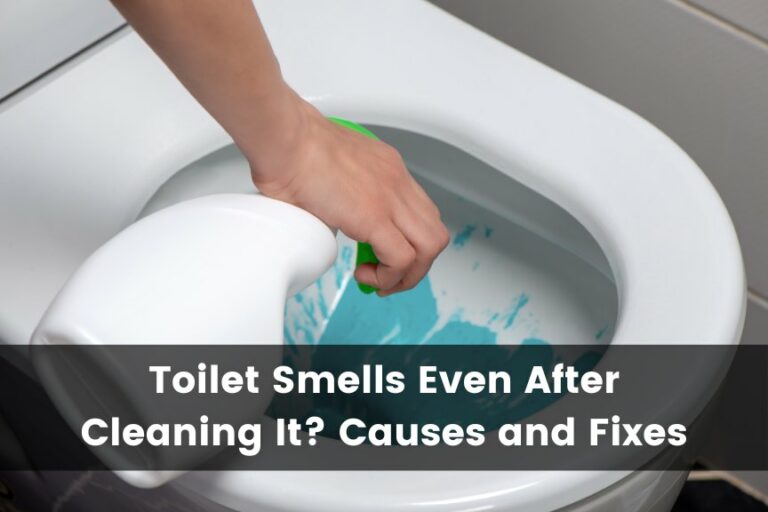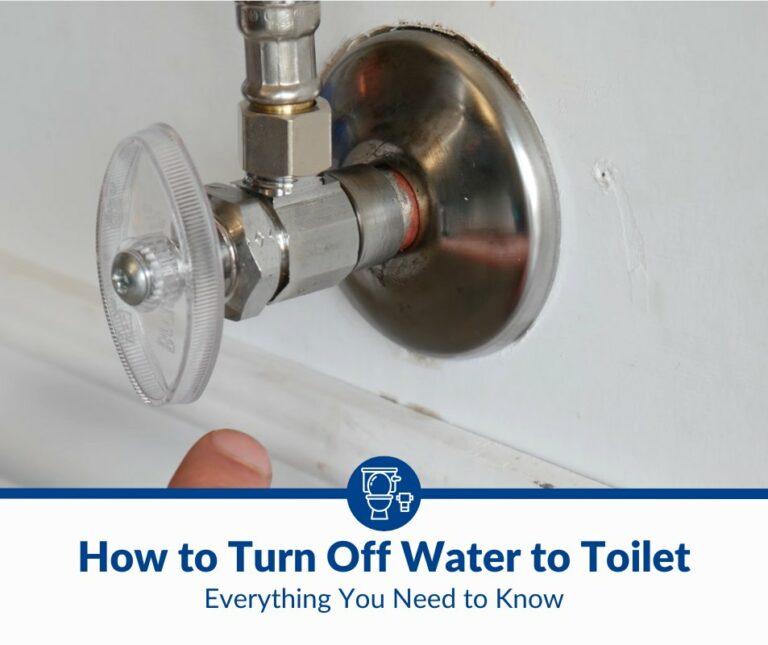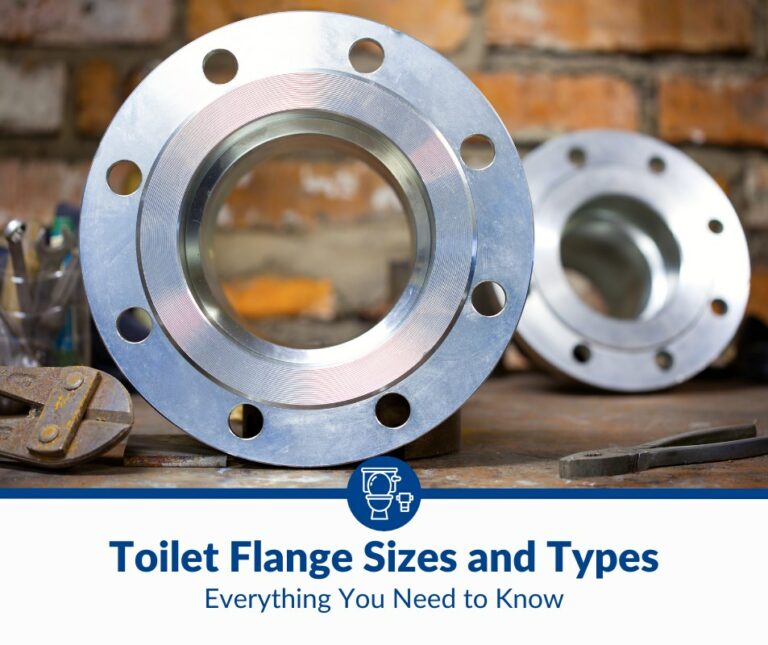Why Does My Toilet Gurgle? Common Issues & How To Fix
A gurgling toilet is a frustrating and potentially serious problem for homeowners. When a toilet gurgles, it can cause sewage to back up into the toilet, leading to foul odors and potential health hazards. In addition to being unpleasant, a clogged toilet can also cause damage to the pipes and fixtures in your home, leading to costly repairs.
Toilet gurgling can be caused by several issues, including clogged or misaligned pipes, damaged seals or gaskets, too much toilet paper or other debris, and more. Each of these causes can have its own unique set of solutions, ranging from simple DIY techniques to professional services.
By understanding the root cause of the gurgling and knowing how to fix it, homeowners can save a significant amount of time, money, and stress and prevent more serious and costly plumbing problems from developing.
The rest of this article will explore the causes mentioned above in greater detail to help you diagnose and troubleshoot the gurgling in your toilet. For each cause, the article will provide a detailed explanation of the issue and step-by-step instructions for how to fix it.
Causes of Toilet Gurgling
Toilet gurgling is usually caused by a blockage or restriction in the pipes that carry wastewater from the toilet to the sewer or septic system. A blockage can cause sewage to back into the toilet, leading to gurgling noises and potential health hazards.
The common causes of a gurgling toilet include:
1. Clogged Pipes
One of the most common causes of toilet gurgling is clogged pipes. When pipes are clogged, they can become blocked with debris or foreign objects, preventing the flow of wastewater and causing sewage to back up into the toilet. This can lead to gurgling noises, unpleasant odors, and potential health hazards.
Many things can cause pipes to become clogged, including excess toilet paper, feminine hygiene products, and other foreign objects that get flushed down the toilet. In some cases, pipes can also become clogged due to the buildup of grease, soap scum, or other substances that can accumulate over time.
2. Misaligned Pipes
Misaligned pipes can cause toilet gurgling by restricting the flow of wastewater. When pipes are not adequately aligned, it can cause a buildup of pressure in the plumbing system, leading to gurgling noises in the toilet.
There are a few different ways that pipes can become misaligned. For example, pipes can become misaligned due to shifting foundations or soil erosion, which can cause the pipes to move out of their proper positions. Pipes can also become misaligned due to improper installation or damage from external forces, such as tree roots or construction work.
3. Damaged Seal or Gasket
When a seal or gasket becomes damaged, it can cause problems with the proper toilet functioning. These important components of a toilet help to create a watertight seal, keeping the water in the tank from leaking out and preventing sewage from backing up into the tank. If one of these seals or gaskets becomes damaged, it can cause problems with the proper functioning of the toilet.
One way that damaged seals or gaskets can cause gurgling in toilets is by disrupting the suction effect necessary for the toilet to flush correctly. When the seal or gasket is damaged, air can enter the system, disrupting the suction and causing gurgling noises. This can also cause the toilet to flush poorly or not at all.
Another way that damaged seals or gaskets can cause gurgling in toilets is by allowing water to leak out of the tank. This can cause the water level in the tank to drop, disrupting the balance of water and air in the system. This can also cause gurgling noises as the toilet tries to compensate for water loss.
4. Too Much Toilet Paper or Other Debris in the Toilet
Too much toilet paper or other debris in the drain can block the flow of water and waste through the drain. This disrupts the suction effect, causing the toilet to flush poorly and leading to gurgling noises.
Excessive amounts of toilet paper or other debris in the drain can also cause gurgling in toilets by causing a partial blockage in the drain. A partial blockage can allow some waste to pass through but also causes a buildup of pressure in the drain. This can cause gurgling noises as the toilet tries to push the waste and air through the partial blockage.
5. Blockage in the Toilet Vent Pipe
A blockage in the vent pipe can cause toilet gurgling by disrupting the flow of air in the plumbing system. The vent pipe is an integral part of your plumbing system, as it allows air to flow in and out of the pipes. This airflow is necessary to balance the pressure in the pipes and ensure that wastewater flows freely.
When the vent pipe is blocked, it can cause a buildup of pressure in the plumbing system, leading to gurgling noises in the toilet. A few different things can cause a blockage in the vent pipe, including debris, bird nests, and other foreign objects that can get stuck in the pipe. The improper installation of the pipes can also cause a blocked vent pipe.
How To Fix Toilet Gurgling: DIY Solutions
There are several simple and cost-effective DIY solutions for fixing toilet gurgling. These solutions can help you address the problem and prevent it from happening again, saving you time, money, and stress.
1. Use a Plunger or Auger To Clear a Clog
Using a plunger or auger to clear a clog is a simple and effective way to fix toilet gurgling and prevent future issues. These tools can help remove blockages from the pipes, restoring proper flow and eliminating gurgling noises.
Here’s how to use a plunger to clear a clog:
- Ensure you have the correct type of plunger. There are different types of plungers, and it’s important to use the right one for the job. For clearing a toilet clog, you’ll need a flange plunger with a rubber end shaped like a funnel.
- Position the plunger over the opening of the toilet drain. Ensure the rubber end is fully seated in the opening, with the handle extending straight up.
- Push down on the handle firmly, creating suction. A plunger works by creating a suction effect that helps remove clogs. Lift the plunger quickly after each thrust to break the suction and flush the loosened clog. You may need to apply additional force or use a back-and-forth motion to help loosen the blockage. Push down in a steady, consistent motion until the clog is removed.
- Repeat this process until the clog is cleared. You may need to repeat this several times to break up blockages and allow the waste to pass through.
- Flush the toilet. Once the water starts flowing freely, you can stop plunging and flush the toilet to clear the remaining debris.
If the plunger doesn’t work or you cannot locate the blockage, you may need to use an auger, also known as a plumbing snake.
Here’s how to use an auger to clear a clog:
- Locate the auger in your plumbing toolkit or purchase one from a hardware store. An auger is a long, flexible tool with a spiral tip that clears blockages in pipes. It is designed to reach into pipes and break up the blockage.
- Insert the tip of the auger into the toilet drain. Gently push it through the pipes until you reach the blockage. You will likely feel resistance as you push the auger through, but don’t force it.
- Twist the handle to activate the spiral tip. Once the tip is in position, twist the handle to turn on the auger and loosen the clog. The tip will spin, breaking up the blockage and allowing it to pass through.
- Slowly turn the auger handle to help loosen and remove the blockage from the pipes. As the blockage is loosened, it should come loose and fall down the drain. You will feel the resistance lessen as the blockage is removed.
- Continue turning the handle until the blockage is cleared. Once the blockage is removed, stop turning the auger handle and pull it back out of the drain.
- Flush the toilet. Once the clog is cleared, flush the toilet and run it for a few minutes to remove the blockage altogether.
2. Check and Tighten Loose Bolts or Seals
Checking and tightening loose bolts or seals is an easy way to address the issue and prevent further gurgling. If a toilet seal, bolt, or flange is loose, it can cause air to become trapped in the pipes, leading to a buildup of pressure and gurgling noises in the toilet.
Here’s how to fix this problem:
- Locate the bolts or seals causing the problem. The bolts or seals are typically located near the toilet’s base or under the tank. You may need to remove a cover or access panel to reach them.
- Check the tightness of the bolts or seals. Gently trying to move the bolts or seals with your hand can be enough to tell if they are loose. If you can move them easily, then they need to be tightened.
- Tighten the bolts or seals. Using a wrench, pliers, or a screwdriver, tighten loose bolts or seals snugly. Use a steady, firm grip to avoid stripping the bolts or damaging the seals.
- Repeat the process for any other loose bolts or seals that you find.
Once you’ve tightened all loose bolts or seals, flush the toilet a few times to test the flow. If the gurgling noises have stopped and the water is flowing correctly, the problem should be fixed.
3. Check Your Vent Pipe for Blockages
To fix this problem, you’ll need to check your vent pipe for blockages and remove any that you find.
Here’s how to do it:
- Locate the vent pipe. The vent pipe is typically located on your home’s roof and is connected to the plumbing system through a series of pipes.
- Check the vent pipe for blockages. A few different things can cause a blockage in the vent pipe, including debris, bird nests, and other foreign objects that can get stuck in the pipe.
- Remove the blockage. Depending on the type and location of the blockage, you can use an auger or a sewer jet to remove it. If the blockage is accessible, you can use a plumber’s snake or a long stick to remove it manually.
- Test the flow. Once you’ve removed the blockage, flush the toilet a few times to test the flow. If the gurgling noises have stopped and the water is flowing correctly, the problem should be fixed.
4. Use a Toilet Cleaner or Deodorizer
Using a toilet cleaner or deodorizer can be an effective way to clear and prevent future toilet clogs. These products contain enzymes that break down and dissolve organic matter, helping to prevent clogs from forming.
Here’s how to use a toilet cleaner or deodorizer:
- Choose a product that is suitable for your needs. There are many different toilet cleaners and deodorizers available, so choosing one that is ideal for your needs is important. Consider factors such as the type of stains or odors you are trying to remove and any specific preferences or allergies you may have.
- Follow the instructions on the product. Each toilet cleaner and deodorizer is different, so it’s essential to follow the instructions on the product to use it properly. This may involve applying the product directly to the toilet bowl or adding it to the water in the tank.
- Allow the product to work its magic. Most toilet cleaners and deodorizers will need a few minutes to work their magic. Follow the instructions on the product to determine how long you should wait before flushing.
- Flush the toilet. Once the product has had time to work, flush the toilet to rinse away the cleaner or deodorizer.
- Repeat as needed. Depending on the severity of the clog or the strength of the odors, you may need to repeat the process a few times to fully clear and prevent future clogs.
Safety Tips and Best Practices
When using any of the above tools and techniques to fix a toilet gurgling issue, it’s important to remember the following tips and best practices:
- Always wear protective gear, such as gloves and goggles, when working on plumbing systems and handling any chemical cleaning agent, such as bleach or ammonia-based cleaners.
- Read the directions carefully and make sure to follow all of the instructions for using a toilet cleaner or deodorizer.
- Always turn off the water supply before attempting repairs on your toilet; this helps prevent flooding and other catastrophic events from occurring while you work on it.
How To Fix Toilet Gurgling: Professional Services
While many simple and cost-effective DIY solutions can help you fix toilet gurgling, more severe issues may require the expertise of a professional plumber or septic tank specialist to diagnose and fix the problem
If you cannot fix the problem on your own, or if the issue persists despite your efforts, consider professional services. Some of the types of services that may be needed include:
- Pipe repair or replacement: If damaged or broken pipes cause the gurgling, a professional plumber may be needed to repair or replace the affected pipes. This may involve digging up the pipes to assess the damage or using specialized tools to repair the pipes from the inside.
- Septic tank pumping or repair: If you have a septic tank system, the gurgling may be caused by a problem with the tank itself. In this case, a septic tank specialist may be needed to pump or repair the tank. This may involve removing and cleaning the tank or repairing or replacing damaged or broken parts.
- Rooter service: In some cases, the gurgling may be caused by tree roots that have grown into the pipes. A rooter service uses specialized equipment to remove the roots and restore proper flow to the pipes.
The cost and time involved in these professional services will depend on the severity of the problem and the type of services needed. Professional services can be more expensive and time-consuming than DIY solutions, but they can also be more effective in addressing serious issues.
To find a reputable and experienced professional:
- Ask for recommendations from friends or family
- Search online for reviews and ratings
- Check with local trade organizations or licensing boards to ensure that the professional you are considering is licensed and insured.
Overall, professional services can be an effective way to fix toilet gurgling in more severe cases. Still, it’s important to research and choose a reputable, experienced professional to ensure the best results.
Conclusion
Toilet gurgling can be an annoying and potentially serious issue. Fortunately, there are several simple DIY solutions that you can try to fix the problem yourself. From cleaning and deodorizing the toilet bowl to using chemical cleaners or plungers, these solutions can help clear clogs and prevent future issues.
Professional services may be necessary if the DIY solutions do not work. Ultimately, addressing toilet gurgling promptly is important to avoid potential damage or costly repairs. I hope this guide has provided you with the knowledge and resources necessary to fix your gurgling issue.
Feel free to leave any comments or questions below. Please contact a plumbing or septic tank specialist if you need further help fixing your toilet gurgling issue. Good luck!







